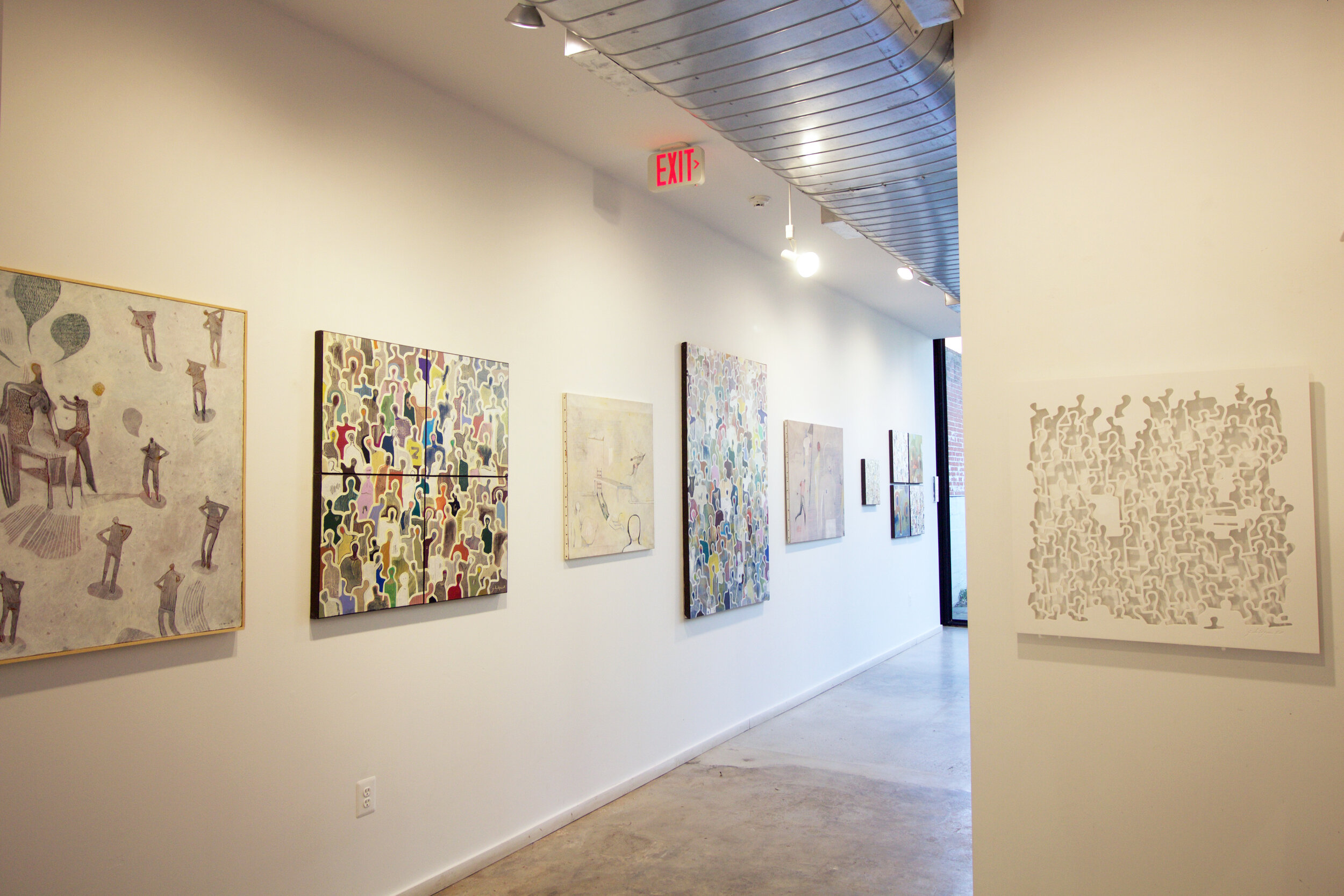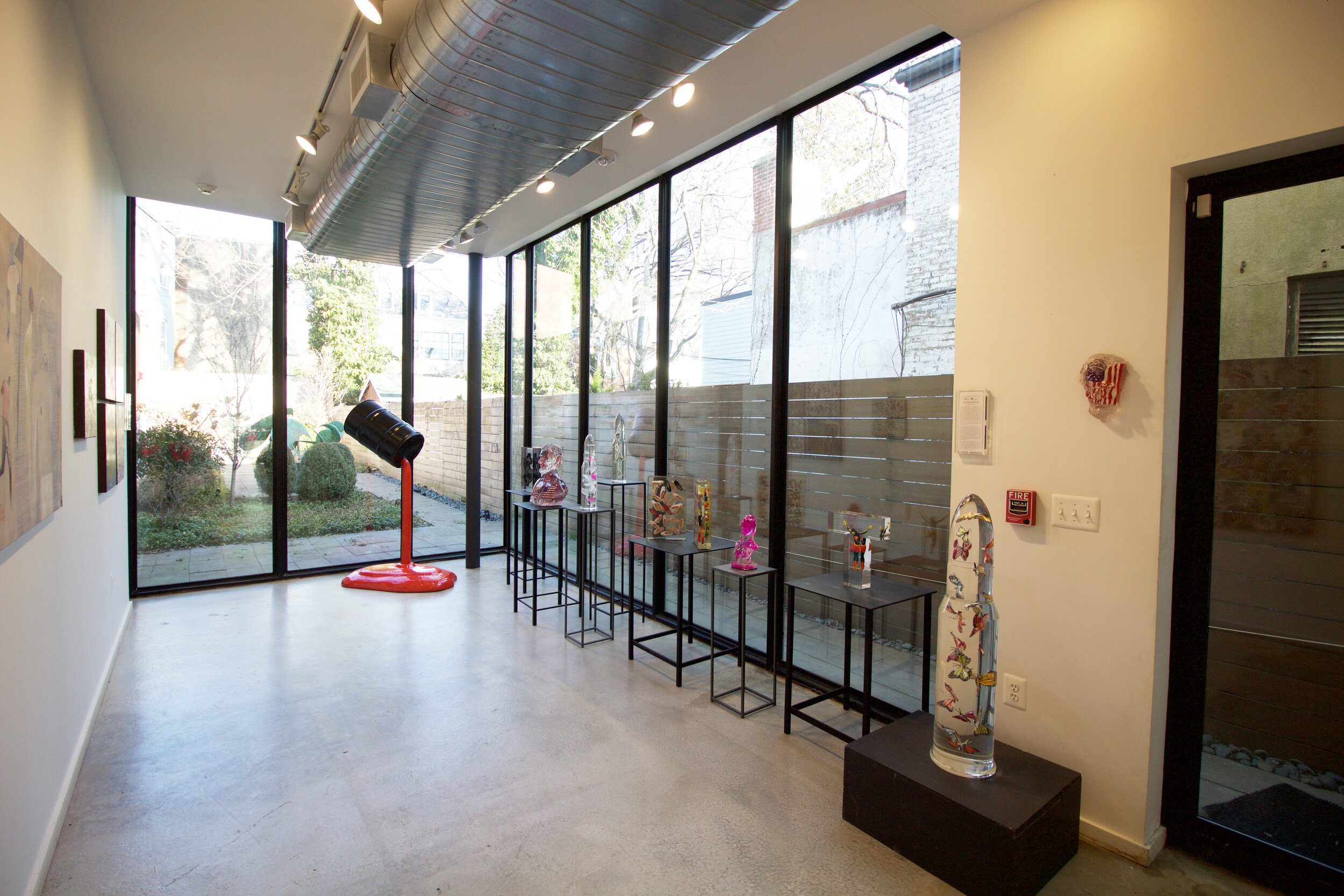Reactions to Contemporary Culture | 2019
Artist’s Proof in collaboration with Batignolles in DC is pleased to announce the exhibition Reactions to Contemporary Culture: Featuring French artists Helder Batista and Gaëtan de Seguin. Responding to pivotal events that have shaped contemporary culture, Batista and de Sequin challenge the traditional boundaries of art and defy easy definition. In a globally influenced, culturally diverse, and technologically advancing world, Helder Batista and Gaëtan de Seguin focus on the varied and changing cultural landscape of identities, values, and beliefs; Encouraging viewers to consider, react, and respond to artworks presented. Through the exhibition, the artists leave the interpretation of the individual pieces vague on their part allowing the viewer to contribute or even complete the artwork by offering his or her reflections, experiences, opinions, and interpretations. Please join us for the opening reception on Wednesday, January 30, 2019, from 6-8PM. A curated selection of works by French artists Helder Batista and Gaëtan de Seguin will be on view at Artist’s Proof through March 10, 2019.
Helder Batista (b. 1964, Paris France), a self-taught artist who works predominantly in sculptural medium, describes the genesis of his artistic career as an epiphany. Intrigued by the complexity and potential of everyday objects, Batista discovered that his ‘found’ objects could function as support, medium, and subject, or as self-sustained complete works of art. Often a simple, clear acrylic mold utilized in works like Washington's Dollars or Lego is enough of a change in context to infuse everyday objects with artistic poignancy. A reaction to contemporary culture, Batista leaves the message of his sculptural works intentionally ambiguous. This aspect allows Batista's works to have varied meanings and interpretations depending on the audience.
Batista’s Flag Gun series, which uses the form of a revolver wrapped with a flag, has multivalent layers of meaning. They can be read as playful subversions of a symbol of power. To others, they are biting political satire on American Imperialism, or high rates of gun ownership. Meanwhile, when paired with the Soviet Union Flag Guns, they conjure both that of Cold War symbolism and the current political scene. Batista himself refuses to elaborate on the symbolism of his flags beyond admitting that he is toying with the power of symbols. Batista explores themes of nonsense, consumerism, globalization, and overconsumption without searching for concrete explanations. By toying rather than pontificating, Batista can be playful while also gesturing at serious dissonances in society. Batista welcomes discussion but resists projections of specific meanings onto his pieces.
French artist Gaëtan de Seguin's (b. 1971, Montpellier, France) latest series "J+...." is a reaction to the terrorists attack on French Satirical magazine Charlie Hebdo that took place in January 2015 and the March that took place later that month in Paris and cities around the world. de Sequin explains, "I immediately wanted my characters to gather and spread out of the canvas. Crowds. Be they dense or sparse, joyful, humble, silent or roaring, moving or obnoxious, etc. Their physical appearance does not matter. It is the combination of their convictions that tinctures the whole group." Each work titled “J+...", represents the number of days after the January 2015 events and when de Seguin began to work on the piece.
Within this series, de Sequin employs two artistic methods, paint on canvas and Moucharabieh, a perforated wall composed mostly of geometrical, arabesque motifs, in the form of a screen, to animate his crowds. These anonymous characters, consisting of a multitude of silhouettes almost identical but remain singular, are represented by a unique pattern of markings further illustrates this “mosaic of a society, a patchwork of men”; each having their own fears, anxieties, but also their hopes and desires in a world that bears multiple aspects. These qualities within the painting and sculptural work show the individual as much as it offers him the possibility to melt into a much broader and abstract dimension.
Within his sculptural pieces, which employ the principles of the moucharabieh, de Sequin continues to offer a different perspective. Questioning the individuals and his place into the grander scheme, he inserts negative space with the pieces to create an alternative focus for the viewer. As light moves through the sculptural works, casting a shadow of the crowd, de Sequin shows humankind constituted of individuals who interact as much as they ignore each other with a great humanism. After graduating from school and completing his military service, he studied art in Paris at ESAG Penninghen. Throughout his career, de Seguin’s works have evolved from abstraction towards figuration, which he continues to develop to this day. His work has been exhibited throughout France, including at Château de la Motte in Narbonne, Galerie La Paix in Sélestat, and Château de Flaugergues in Montpellier, among others.


